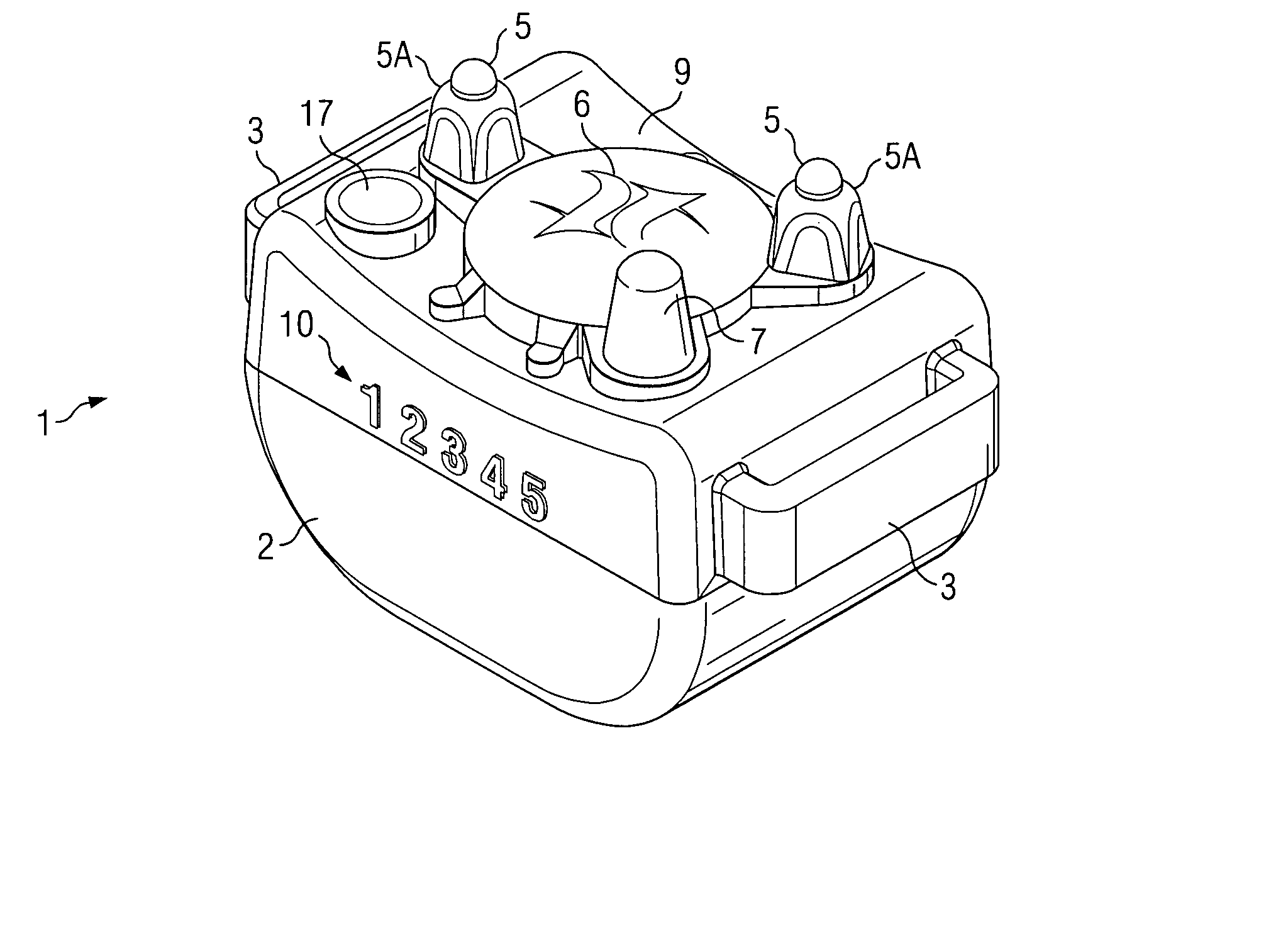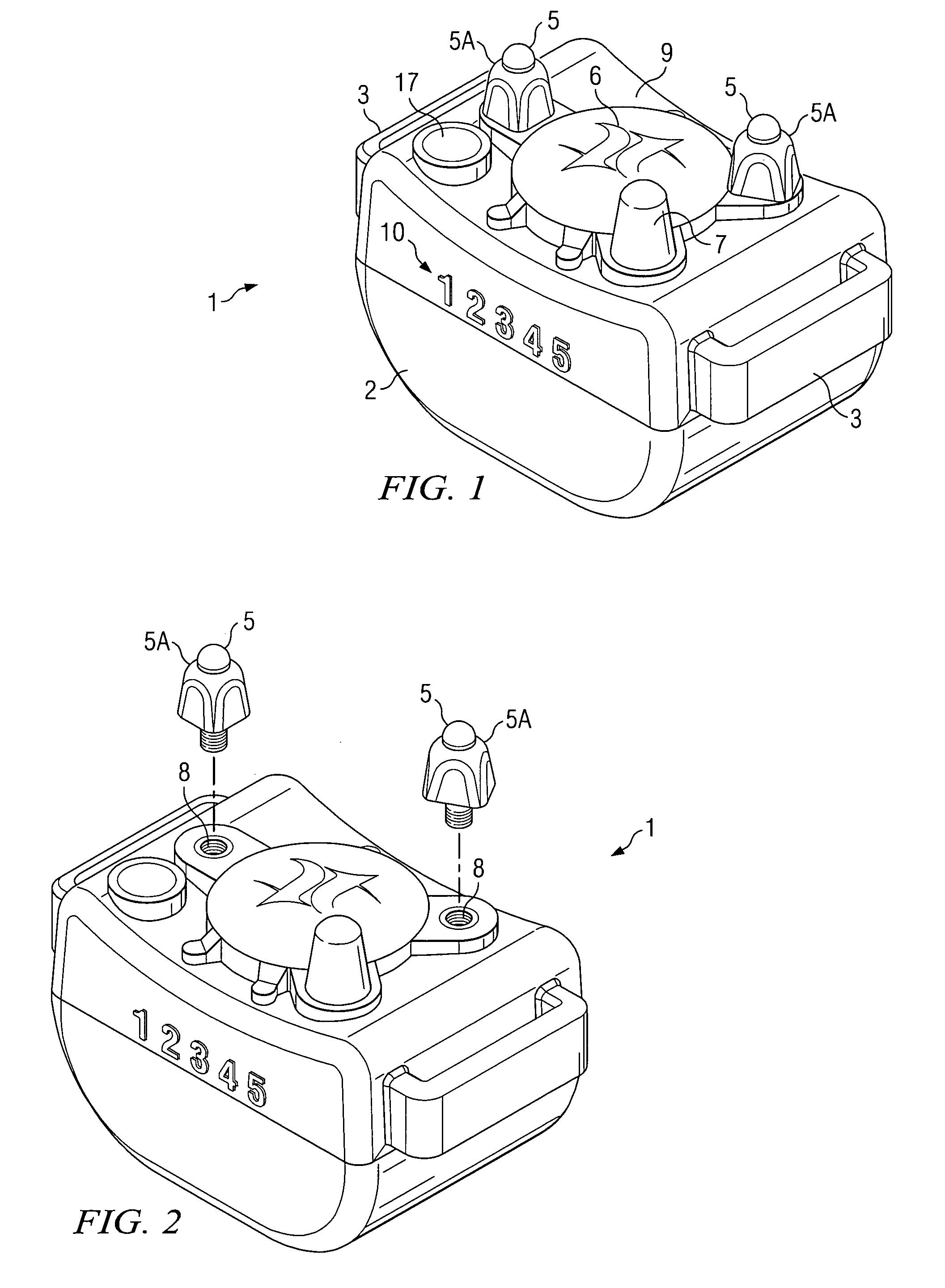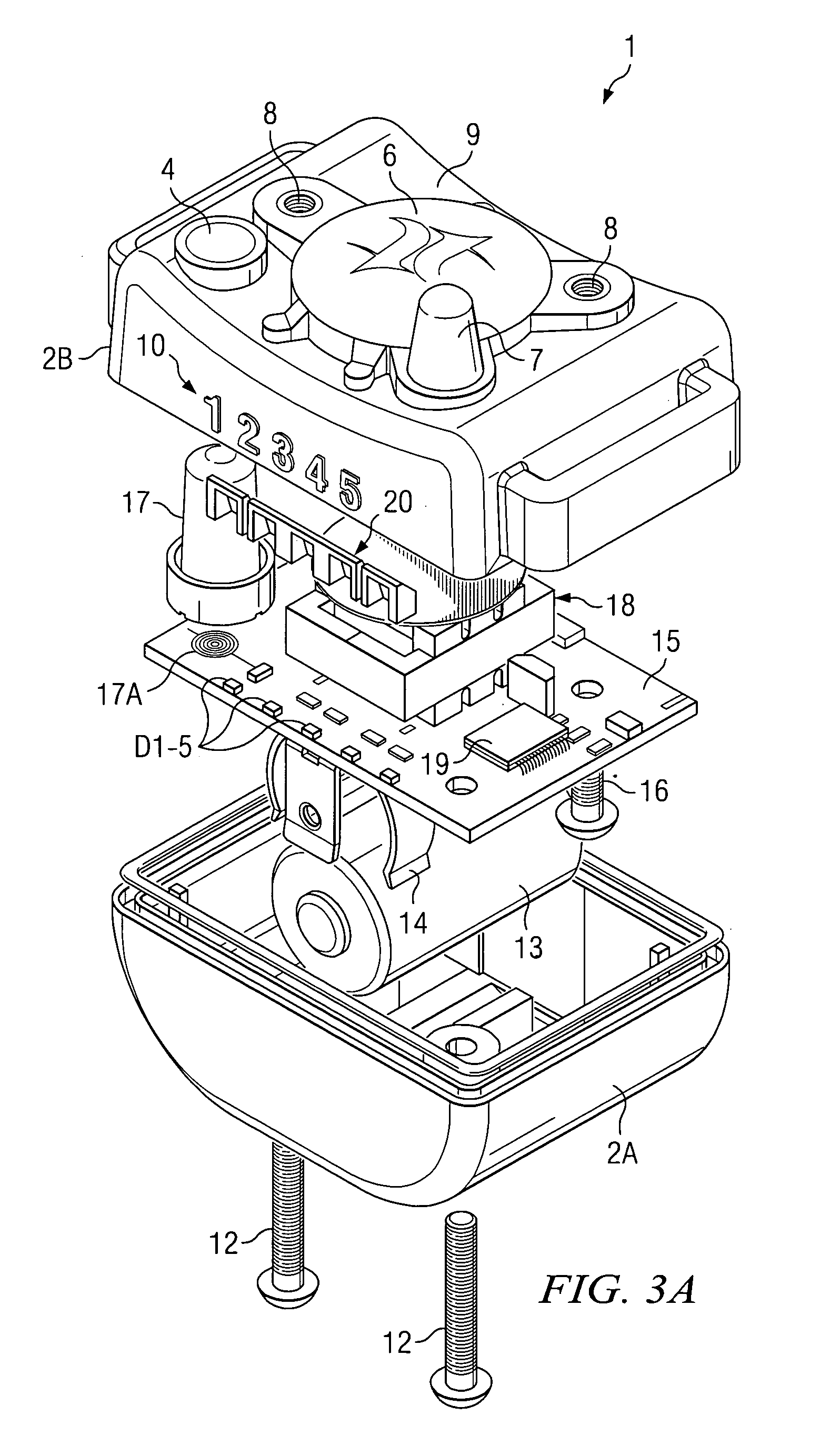Synchronized primary winding current shunting technique for controlling electro-stimulus level
a primary winding current and electro-stimulus technology, applied in the field of electro-stimulus remote training collars, can solve the problems of undesirable welfare of the dog and the nearby people, general disturbance, undesirable low open circuit voltage between the stimulus electrode transformer and the stimulus electrode, etc., and achieve the effect of convenient adjustment of the stimulation intensity applied to the animal
- Summary
- Abstract
- Description
- Claims
- Application Information
AI Technical Summary
Benefits of technology
Problems solved by technology
Method used
Image
Examples
Embodiment Construction
[0049]To summarize, a preferred embodiment of a dog bark limiter of the present invention provides convenient manual adjustability of the applied stimulus level to be applied to the neck of the dog by means of a switch. The bark limiter also includes low power circuitry that improves the electrical stimulation scheme to provide adequately high open circuit voltage between the stimulus electrodes in a small, lightweight collar-mounted animal training product at both high and low selected stimulus levels. The described bark limiter includes a motion detector that detects characteristic motion of the dog's neck produced as a result of barking and in response automatically powers up the circuitry from a very low power stand by operating condition.
[0050]A technique of “valid” bark detection using software wherein a capture and compare routine is executed in software executed by a microcontroller to accomplish the function of, in effect, generating a frequency spectrum of the received sou...
PUM
 Login to View More
Login to View More Abstract
Description
Claims
Application Information
 Login to View More
Login to View More - R&D
- Intellectual Property
- Life Sciences
- Materials
- Tech Scout
- Unparalleled Data Quality
- Higher Quality Content
- 60% Fewer Hallucinations
Browse by: Latest US Patents, China's latest patents, Technical Efficacy Thesaurus, Application Domain, Technology Topic, Popular Technical Reports.
© 2025 PatSnap. All rights reserved.Legal|Privacy policy|Modern Slavery Act Transparency Statement|Sitemap|About US| Contact US: help@patsnap.com



